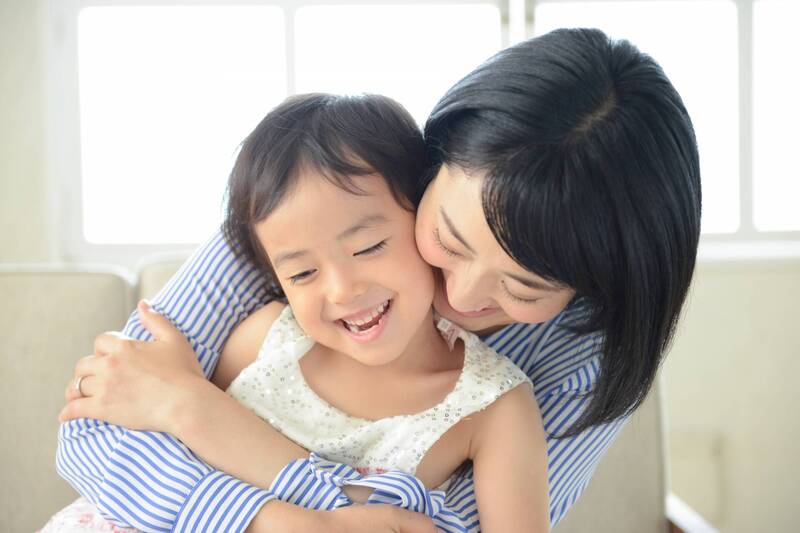Psychologists suggest that when parents take care of their children, they should not hesitate to give intimate and gentle physical contact, so that the children can feel more secure; the picture shows the situation.
(The picture is taken from photoAC)
[Health Channel/Comprehensive Report] It is often seen that children will stick to their parents when they first arrive in a new environment.
In this regard, Hong Zixuan, a clinical psychologist at the Good Day Psychotherapy Institute, pointed out in the "Good Day Psychotherapy Institute" on Facebook that the reason for this is that children and their parents already have an attachment relationship, which is a safe fortress for children in the process of exploration.
The attachment relationship refers to the emotional connection between a person and a significant other, which can be divided into four types according to the degree of anxiety and avoidance, including secure attachment, anxious attachment, avoidant attachment, and chaotic attachment.
Attachment from an early age shapes future intimate relationship interaction
Hong Zixuan explained that through the emotional connection generated by the attachment relationship, we can find our place in interpersonal relationships and stabilize ourselves in the company of others.
Generally speaking, the attachment relationship begins to germinate when the child is 6 months old. At this time, the child begins to want to explore the outside world in order to establish his own understanding of everything in the world.
Please read on...
Hong Zixuan said that facing the unknown is always scary, so children need to build a safe fortress, so that they can return to the safe fortress for comfort and protection if they feel scared or threatened during the exploration process.
And this kind of attachment will remain in the child's heart, shaping his future interaction mode in the face of intimate relationships.
According to the degree of anxiety and avoidance, the relationship is divided into 4 types
Hong Zixuan pointed out that both parent-child relationships also have different forms of attachment.
The researchers used observations to understand how children respond to the company, departure, and reunion of their primary caregivers.
Finally, through behavioral observation and theoretical analysis, it is found that the attachment relationship between a person and the primary caregiver can be divided into four types according to the degree of anxiety and avoidance:
Psychologists pointed out that according to the degree of anxiety and avoidance, attachment relationships can be divided into four types, including secure attachment, anxious attachment, avoidant attachment, and chaotic attachment.
(The picture is taken from the Facebook of Good Day Psychotherapy Institute)
●Secure attachment: low anxiety and low avoidance.
Children of this type will freely explore the environment when they are with their loved ones; they will cry when their loved ones leave; they will seek comfort and restore peace when their loved ones are reunited.
These children grow up to be confident and self-loving, willing to take the initiative to establish relationships with others, trust others, and maintain stable relationships with others.
●Anxious-ambivalent attachment: high anxiety, low avoidance.
Children of this type will shrink back and dare not explore freely when they are with their loved ones; they will be very sad when their loved ones leave; they will be emotional and difficult to appease when their loved ones reunite.
When these children grow up, they lack a sense of security. They are often afraid that others will leave them, and it is difficult to trust others. They will always want to confirm their relationship and feelings with each other.
●Avoidant attachment: low anxiety, high avoidance.
Children of this type have little interest in exploring the environment when their relatives are with them; they do not care much when their relatives leave; they try to escape when their relatives reunite.
When these children grow up, their interpersonal relationships are relatively alienated, and they will consciously or unconsciously avoid opportunities to establish intimate relationships with others. They feel that the responsibilities brought by relationships are too heavy, and they would rather be alone.
●Disorganized attachment: high anxiety, high avoidance.
Children of this type have no fixed response patterns when their relatives are with them, when they leave, or when they are reunited. They often appear to be confused or confused about the situation.
These children have difficulty developing a stable self-concept as they grow up, and it is also difficult for them to enter into intimate relationships.
Give the next generation a sense of security 4 recipes Positive response to communication
Hong Zixuan reminded that children have different forms of attachment when they are young, but with growing experience, the attachment relationship may also change.
If you meet a warm, positive, and consistent person, the child's inner imagination of the relationship will gradually change, making him a more confident and secure person.
Therefore, parents can also bring a sense of security and warmth to the next generation through the following four ways:
●When a child expresses his need, he can immediately understand the child's need and give a positive response patiently.
●Ability to set clear and consistent principles and standards when raising children.
●When taking care of children, do not hesitate to give intimate and gentle physical contact, so that children can feel at ease.
●Take care of your physical and mental health.
When you are stable, you can also bring stability to your children.
☆Health news will never be missed, click like to follow the fan page.
☆For more important medical news, please go to Liberty Health.com.
keywords
child
accompany
anxiety
interpersonal relationship
escape
Emotional connection
Dependency
related news
